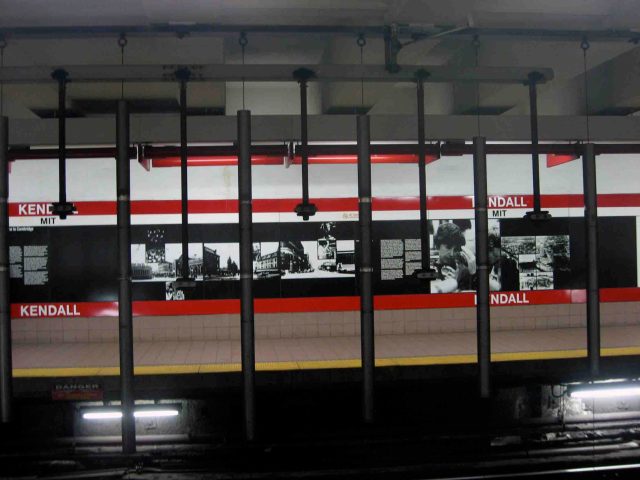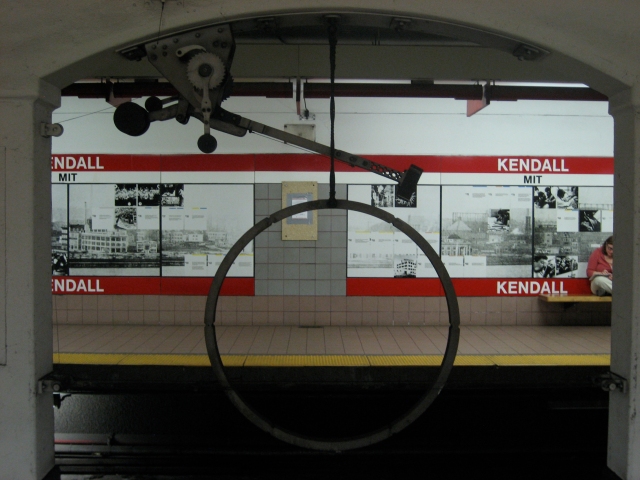The Kendall Band
The Kendall Band is a three-part sculpture created between 1986 and 1988 by Paul Matisse; the grandson of Henri Matisse and stepson of Marcel Duchamp. Located between the inbound and outbound tracks of the Massachusetts Bay Transportation Authority’s Kendall Station located in Cambridge, Massachusetts, Matisse won the commission in 1981 to create a sculpture for Kendall Station,[6] as part of an effort to beautify the Red Line and its stations. This effort was known as the “Arts on the Line” program, and was “the first program in the nation to put works of art in public transportation systems.” The work was not installed until 1987 due to station reconstruction.
The work consists of three interactive instruments that are played using handles located on either the inbound or outbound subway platform wall. Aluminum, steel, and teak were all used in the construction of the instruments, with the teak being used for the handles of hammers. The three parts of the interactive work are called “Pythagoras,” “ Kepler,” and “ Galileo,” and are all controlled by levers located on the subway platforms.
Pythagoras
The Pythagoras section of the Kendall Band is named for the philosopher, mathematician, and scientist Pythagoras of Samos, who is best known for the Pythagorean theorem. The sculpture consists of 16, 4-inch diameter, and 1/4-inch thick, aluminum tubular bells, all tuned in the key of B minor. The longer bells create low pitches, while the shorter bells create higher pitches in the scale. When a handle on the wall of the subway platform is pulled, hammers swing back and forth in between the bells striking them and creating the musical notes. Due to asymmetrical slits located at the nodal points in the bells, each chime’s note plays a slight vibrato.
Kepler
The Kepler section is named for Johannes Kepler, a 17th century German mathematician, astronomer and astrologer. The 125 pound,[6] 55-inch,[1] metal ring that this part consists of plays a F♯ when struck. This note creates a perfect fifth with the notes created by Pythagoras. The ring plays this note when a handle on the subway platform is manipulated, which in turn ratchets a hammer upward until it falls and strikes the ring. After the ring is struck, it will continue to hum for five minutes.
Galileo
The Galileo instrument is a large metal sheet the size of a barn door,[4] and is named for Italian physicist, mathematician, astronomer, and philosopher Galileo Galilei. The large sheet of metal works like a thunder sheet. When a handle on the station platform is moved, the sheet shakes and creates a low rumbling sound, similar to the sound of thunder.




